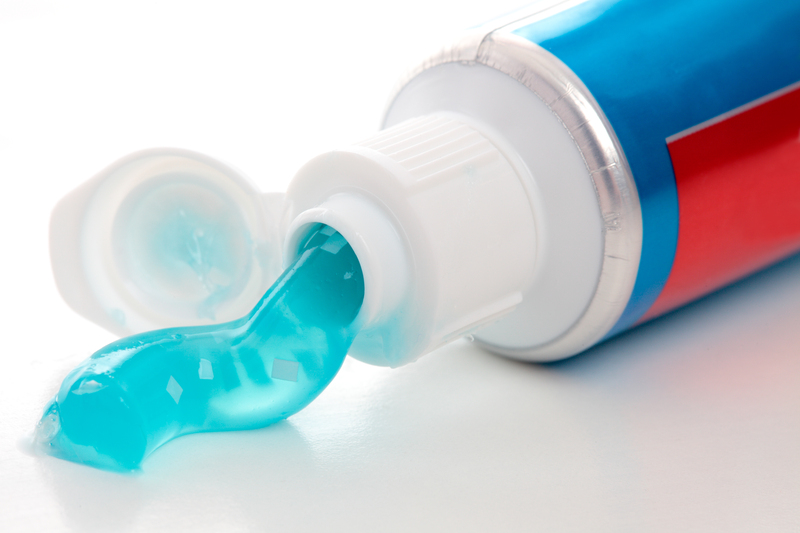Is Steam Cleaning Safe for Your Leather Sofa?
Posted on 03/07/2025
Is Steam Cleaning Safe for Your Leather Sofa?
Leather sofas are a luxurious choice that adds sophistication, comfort, and value to your living space. Over time, however, even the highest-quality leather furniture can accumulate dust, dirt, oils, and even mold or bacteria--raising the important question: Is steam cleaning safe for your leather sofa? In this comprehensive guide, we'll explore steam cleaning leather upholstery, discuss safe cleaning options, and share maintenance tips to keep your sofa looking stunning for years.

Understanding Leather Sofas and Their Unique Cleaning Needs
Types of Leather Used in Sofas
Before choosing a cleaning method, it's essential to understand the type of leather your sofa is made from. This knowledge ensures you select cleaning techniques that won't cause damage.
- Aniline Leather: Soft, full-grain leather with minimal surface treatment. Luxurious but highly absorbent and prone to stains.
- Semi-Aniline Leather: Treated with a light protective coating, it retains much of the soft feel but offers some resistance to spills.
- Protected or Pigmented Leather: Most durable. Treated with thick coatings for improved stain, fade, and scratch resistance.
- Bonded/Faux Leather: Not true leather--it's made from leather scraps or synthetic materials, often easier to clean but less durable.
Each leather type responds differently to cleaning and moisture. Identifying yours is the first step to safely maintaining your leather couch.
Leather's Sensitivity to Moisture and Heat
Unlike fabric upholstery, leather is a natural, porous material. It's sensitive to water, heat, and harsh chemicals. Excessive moisture can cause:
- Stains and watermarks
- Color fading or bleeding
- Cracking and stiffness as leather loses its natural oils
- Peeling or warping in bonded leather
Steam cleaning methods, which rely on high-temperature vapor, have the potential to damage leather if not performed with extreme care and the right technique.
How Does Steam Cleaning Work?
Steam cleaning uses hot water vapor generated by a steam cleaner to loosen dirt, oil, stains, and bacteria from surfaces. For fabric upholstery and carpets, steam cleaning (also known as hot water extraction) can be highly effective. The process involves:
- Heating water to produce steam
- Applying vapor to the material via a nozzle or brush
- Dissolving dirt and killing bacteria with heat
- Extracting or wiping away the residue
Steam cleaning is favored for its ability to sanitize without chemicals and remove deep-seated grime. But does this process make sense for luxury materials like leather?
Can You Steam Clean a Leather Sofa?
The short answer: Proceed with extreme caution!
Steam cleaning is generally not recommended for most genuine leather sofas due to the risks of moisture and heat damage. However, with the right precautions and knowledge, it can sometimes be used on certain types of treated or protected leather--but never on delicate aniline leather.
Potential Benefits of Steam Cleaning Leather
- Sanitization: The heat from steam can help kill bacteria, dust mites, and some allergens.
- Loosening Dirt: Steam can lift stubborn stains and grime, especially on the surface-protected leather.
- No Chemical Residue: As no harsh cleaning chemicals are needed, it avoids residue buildup that can harm leather long-term.
Despite these possible benefits, the risks often outweigh the advantages if the wrong technique is used or the leather is sensitive.
Risks of Steam Cleaning Leather Sofas
- Drying Out the Leather: The heat can evaporate natural oils, resulting in cracks, stiffness, and dullness.
- Discoloration and Fading: Hot steam may cause dyes to bleed, fade, or cause uneven patches.
- Water Damage: Excess moisture can penetrate leather, leaving permanent stains or encouraging mold and mildew growth.
- Surface Damage: If using abrasive nozzles or brushes, steamers can scratch or degrade the protective finish.
For antique, vintage, or high-value leather furniture, traditional steam cleaning is almost always discouraged.
When Is Steam Cleaning Leather Furniture Safe?
There are a few scenarios where steam cleaning can be attempted with caution:
- Your sofa is made of protected/pigmented leather with a robust surface coating.
- You use a steam cleaner with temperature and humidity controls designed for use on leather.
- A soft microfiber cloth is used between the nozzle and the leather to diffuse the steam.
- You avoid prolonged exposure and wetting any spot for more than a few seconds.
- The sofa is thoroughly dried and conditioned immediately after cleaning.
Always verify manufacturer recommendations and test in an inconspicuous area first.
How to Steam Clean a Leather Sofa Safely: Step-by-Step
If you decide to steam clean your leather sofa, follow these stringent safety steps:
- Check Manufacturer Instructions: Consult the care label or manufacturer's website for approved cleaning methods.
- Test in a Hidden Area: Use a small patch on the back or underneath the sofa to check for adverse reactions.
- Set Your Steamer Properly:
- Lowest temperature and moisture settings
- Use only clean, distilled water to avoid mineral deposits
- Cover Nozzle with a Cloth: Wrap the steam nozzle in a microfiber cloth to diffuse heat and prevent direct contact.
- Quick, Light Touch: Keep the nozzle moving, never let it linger in one spot. Limit steaming each section to a few seconds.
- Immediately Wipe Dry: Use a dry, clean microfiber cloth to absorb moisture right after steaming each area.
- Condition the Leather: Once fully dry, apply a high-quality leather conditioner to restore lost oils and suppleness.
Alternatives to Steam Cleaning Leather Sofas
Steaming isn't the only method for keeping your leather couch fresh and hygienic. Here are the safest and most effective alternatives:
1. Regular Dusting and Vacuuming
Vacuum your sofa weekly using a soft brush attachment. This removes crumbs, pet hair, and dirt before they embed in the leather.
2. Wiping with Damp Cloth
Use a lightly dampened, soft microfiber cloth to wipe the leather surface. Ensure you dry the area immediately. Do not saturate the surface.
3. Specialized Leather Cleaners
Choose a pH-balanced, gentle leather cleaner designed for your type of leather. Apply according to directions with a soft cloth.
4. Leather Conditioning
To keep leather supple and prevent cracking, use a good quality leather conditioner every 3-6 months.
5. Professional Leather Cleaning Services
For tough stains or annual deep cleans, hire certified professionals with experience in leather upholstery. They use industry-approved products and methods tailored to your sofa's leather.
Common Leather Sofa Stains and Treatment Tips
- Ink: Dab (don't rub) with a white cloth lightly dampened in isopropyl alcohol. Rinse and condition.
- Grease/Oil: Sprinkle with baking soda and wait a few hours, then brush away and wipe gently.
- Food/Drink: Quickly blot, never wipe, then clean gently with a slightly damp cloth.
- Pet Stains: Use a leather-specific enzymatic cleaner. Avoid products with ammonia or bleach.
Always test cleaning solutions on a hidden area first, and avoid commercial "all-purpose" cleaners unless specifically marked for leather.
How to Prevent Damage and Prolong the Life of Your Leather Sofa
- Avoid Direct Sunlight: UV rays fade and dry out leather. Place sofas away from windows or use curtains.
- Maintain Humidity: Very dry air leads to cracking; very damp air can cause mold.
- Condition Regularly: This restores moisture and prolongs suppleness.
- Rotate Cushions: Evenly distribute wear and prevent permanent indentations.
- Keep Pets' Claws Trimmed: Prevent accidental scratches and punctures.

FAQs: Steam Cleaning and Leather Sofas
Is steam cleaning ever recommended for all leather sofas?
No. Aniline and semi-aniline leathers are too delicate. Only surface-protected (pigmented) leathers may be carefully spot-steamed, but gentle alternatives are generally safer.
Will steam cleaning kill bacteria and dust mites in leather?
What is the best way to clean a leather sofa?
Use a soft, damp microfiber cloth, followed by a dry cloth, and finish with a designated leather cleaner or conditioner. Clean up spills promptly and vacuum regularly.
How can I remove odors from my leather sofa?
Wipe with a solution of water and distilled white vinegar (test first), then air dry. Use leather-safe odor neutralizers if desired.
Conclusion: Should You Steam Clean Your Leather Sofa?
While steam cleaning can work wonders on fabric upholstery, it's generally not safe or recommended for most real leather sofas. The combination of heat and moisture can dry out, discolor, or even warp your precious leather furniture.
If your sofa is made from robust, surface-protected leather, cautious, light steam cleaning with proper technique may be possible, but always test first and prioritize gentle, leather-appropriate alternatives. For delicate or untreated leather types, stick with specialized cleaning and conditioning products.
Proper maintenance--with regular dusting, immediate spill cleanup, professional cleaners for tough jobs, and periodic conditioning--will keep your leather sofa looking and feeling luxurious year after year. When in doubt, consult a professional leather cleaning service to protect your investment--and enjoy the timeless elegance of your leather sofa for generations.



